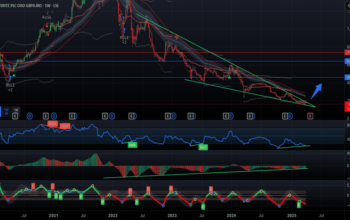Commodity markets, acting as the backbone of global trade, play a critical role in the exchange of essential raw materials and primary agricultural products. In this comprehensive guide, we will delve deep into the core aspects of commodity trading, with a specific emphasis on the significance of commodities in the global economy and their unique dynamics. Understanding the fundamental definition of commodities and recognizing their pivotal role establishes a solid foundation for exploring the crucial concepts of fundamental and technical analysis in commodity trading. These analytical approaches are indispensable for traders seeking success in this dynamic market. Fundamental analysis involves evaluating the underlying factors influencing commodity prices, while technical analysis focuses on historical price data to identify patterns and trends. Combining these methodologies empowers traders with valuable insights, allowing them to make informed decisions and navigate the complexities of commodity trading effectively. With a deep understanding of Commodity Research and the use of analytical tools, traders can seize opportunities and mitigate risks, ultimately achieving profitable outcomes.
Importance and Role of Commodities in the Global Economy:
Commodities refer to essential raw materials and agricultural products that are traded in the global market. They play a critical role in the world economy, forming the foundation of industries and influencing economic growth. From metals that drive manufacturing to agricultural products that sustain nations, commodities are vital for daily life and industrial operations.
Risk Management in Commodity Trading:
The unpredictability of commodity markets necessitates effective risk management strategies for traders. Understanding commodity market volatility is paramount to identifying potential risks and opportunities. Employing techniques like setting stop-loss orders effectively, managing position sizes, and diversifying portfolios can mitigate risks in this dynamic market.
Fundamental Analysis in Commodity Trading:
Fundamental analysis is a cornerstone process in commodity trading that involves evaluating the underlying factors influencing commodity prices. Traders must grasp the utmost importance of this analysis as it encompasses a thorough examination of various critical elements. Firstly, studying key economic indicators provides valuable insights into the overall health and performance of the economy, directly impacting commodity demand. Secondly, analysing supply and demand data allows traders to gauge the market’s balance and anticipate potential shifts in prices based on changing market dynamics. Lastly, keeping a close eye on geopolitical events and news helps traders understand how global events can disrupt supply chains or create demand fluctuations.By assimilating these fundamental factors, traders gain a comprehensive understanding of the commodity market, enabling them to make well-informed decisions. This analysis offers valuable foresight into the market’s future trends and potential price movements, granting traders an edge in this competitive landscape.Understanding how these fundamental elements interact and influence commodity prices empowers traders to navigate the often-volatile market landscape with increased confidence.
Technical Analysis in Commodity Trading:
Technical analysis serves as a valuable complement to fundamental analysis, as it involves studying historical price charts to identify patterns and trends. By understanding the fundamentals of technical analysis, recognizing chart patterns, and proficiently using technical indicators, traders enhance their ability to make well-informed decisions in the market. The incorporation of technical analysis with fundamental analysis creates a more comprehensive trading strategy.Through technical analysis, traders gain insights into historical price movements and the behaviour of market participants. This analysis helps in identifying support and resistance levels, trend lines, and chart patterns such as head and shoulders, double tops, and triangles. Technical indicators like moving averages, relative strength index (RSI), and stochastic oscillators aid in gauging market momentum and potential price reversals.By blending technical and fundamental analysis, traders obtain a holistic view of the commodity market, enabling them to make more informed and well-rounded trading decisions.
Indian Commodity Market:
As we progress further in this guide, it is crucial to emphasise the significance of the Indian commodity market. With its considerable potential and diverse array of offerings, the Indian commodity market serves as a magnet for traders from around the world. Understanding the market’s unique dynamics and exploring the opportunities it presents can be highly advantageous for those looking to expand their trading horizons. The Indian commodity market holds a prominent position in the global commodity landscape, driven by factors such as economic growth, population dynamics, and industrial development. Traders can find an array of commodities, including agricultural products, metals, and energy resources, making it a highly attractive and dynamic trading environment. By gaining insights into the intricacies of the Indian commodity market and staying abreast of market developments, traders can tap into its potential and capitalise on the various opportunities it offers.
In bringing this guide to a close, we underscore the significance of maintaining psychological discipline and crafting a well-defined trading plan in fundamental and technical analysis for commodity trading. The advent of commodities trading apps has proven invaluable, equipping traders with real-time market data and facilitating timely decision-making. Aspiring commodity traders must revisit the essential points covered herein and demonstrate unwavering dedication to continuous learning and adaptability. By skillfully amalgamating fundamental and technical analysis, bolstered by effective risk management strategies, traders can confidently navigate the intricacies of commodity markets, propelling themselves towards successful trading outcomes.



